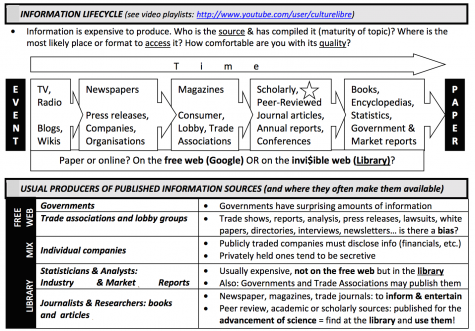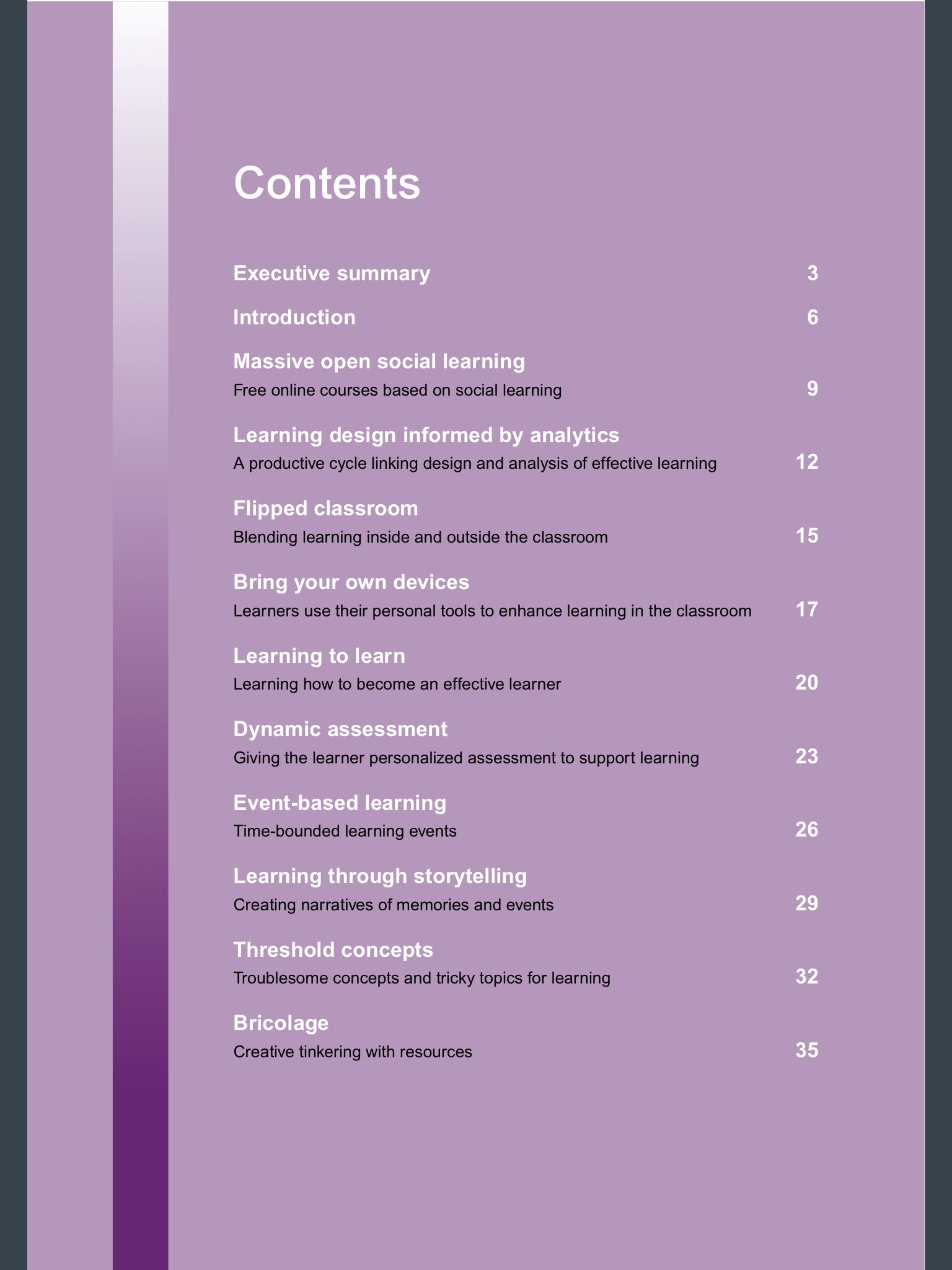Guidelines - recommendations Librarianship Universities
ALA on digital literacy
Olivier Charbonneau 2013-05-17
The American Library Association’s Office for Information Technology Policy launched last January a report called “Digital Literacy, Libraries, and Public Policy” – the 27 page PDF report can be downloaded here.
Here is what the document has to say about Academic Libraries (p. 14-16)
Academic Libraries
The role of the academic library in the higher education ecosystem reflects the important relationship between the classroom professors, the curriculum, and the librarians in contributing to students‟ digital literacy. That is, the degree to which students take advantage of library resources—and the digital literacy skills they can gain by working with librarians—is influenced by the extent to which their official coursework or classroom time provides a link.
Digital Literacy through Information LiteracyAlthough academic libraries are more focused on information literacy than digital literacy, these two twenty-first century literacies are closely linked: information literacy requires digital literacy to access appropriate online research sources, and information literacy gives further context to the evaluation skills developed by digital literacy. ACRL‟s Information Literacy Competency Standards for Higher Education are often cited as a key resource on the role of and criteria for information literacy.
44 Furthermore, students learn many skills and research methods beyond what they learn in or about the library; thus, the development of information literacy is gained partly inside but also outside of the library.
Collaborative Partnerships
Information literacy initiatives often are a campus-wide effort. Librarians partner with professors, student affairs professionals, and media services staff, among others, to advance both the library and campus missions. Yet despite the potential of academic libraries to contribute to information literacy, perhaps the greatest challenge for academic librarians is that college students make much less use of librarians‟ expertise than they could. A five-campus, 2-year ethnographic study investigating how students perceive and use their campus libraries revealed that “students rarely ask librarians for help, even when they need it.”
45 The study findings detail just how underdeveloped students’ skills are when it comes to applying the digital fluency they show in nonacademic settings (e.g., on Facebook, in texting, in sharing videos with friends) in traditionally academic settings and with academic resources.
Many campuses are recognizing the importance of redefining what digital literacy means in the realm of higher education. They are taking an unvarnished, pragmatic look at students’ struggles to engage fully with digital resources and communities in academic settings and at what information skills students need for the workplace. Librarians are applying these findings by striving to work closely with university administrators and professors to integrate information literacy skills into the student learning process. At the University of Tennessee in Chattanooga, for example, librarians helped write the basic English curriculum, ensuring that the standard course, reaching 78 percent of freshmen, was aligned with ACRL information literacy standards.
Today, “students simply cannot pass either semester of freshman composition without meeting a certain minimal threshold of information literacy in accordance with ACRL standards 1 through 4.” (note 46)
Activity Level in the Field
Instructional efforts at academic libraries take many forms, from face-to-face and web-based instructional offerings to carefully crafted pathfinders and guides. The libraries have appointments devoted to instruction and information literacy, and each year ACRL‟s Institute for Information Literacy Immersion Program trains academic librarians in the development, delivery, assessment, and management of information literacy. (note 47)
Today‟s information literacy efforts reflect an extensive level of activity in the field. According to a recent ALA report on Trends in Academic Libraries, for example, “nearly half (46.6 percent) of all academic libraries reporting had a definition for information literacy or an information literate student, increasing
about 18.2 percent in 2008 from 2004.” (note 48 )
Additionally, there was “a 13 percent increase in 2008 from 2004 of all academic libraries reporting having incorporated information literacy into their institutional missions.” Note 49
Growth also has occurred in the overall number of instruction sessions and in the number of learners reached by the instruction.
In addition to course-integrated offerings and guides, some institutions offer for-credit information literacy courses. Iowa State University‟s Library 160 course is by far one of the oldest information literacy courses in the United States. In its nearly 100-year history, the course has undergone many curriculum transformations, from an introductory library session to now shaping its core outcomes according to ACRL‟s Information Literacy Competency Standards for Higher Education. The required 1-credit hour course is structured with readings and quizzes that cover information needs, web resources and evaluation, library resources, scholarly and popular articles, how to work with the library‟s databases, and academic integrity and plagiarism. In today‟s digital environment, social responsibility in information use is more important than ever.
Librarians instruct students in proper citation techniques and ethical retrieval methods. They help college students hone the critical and problem-solving skills needed to survive and thrive in a digital world. Such activities will prepare students for future academic success and set the stage for lifelong learning habits.
The Academic Librarian’s Toolkit
Academic librarians are true innovators in the classroom, ever investigating interactive instructional methods and new modes of delivering instruction. Today‟s classroom environment calls on librarians to meet students where they are, which may be beyond library walls.
Librarians work to embed tools such as chat widgets into library databases and use multimedia guides such as LibGuides to enhance instruction sessions and assignments. They also create online tutorials and instructional videos; use learning management systems; and craft interactive, homegrown games for use by students to explore information literacy concepts. And by working with Web 2.0 technologies, they encourage students to gain confidence with exploring new technologies while modeling appropriate, responsible use of them. In all of these efforts, librarians strive to make the learning experience as dynamic and engaging as possible.
Information Literacy Assessment Initiatives
An extensive body of literature focused on information literacy explores, among many other aspects of the subject, how people experience and respond to the changing digital world. The University of Washington Information School‟s ongoing research project on Project Information Literacy is one example of a systematic and concentrated effort to document the state of competency in information literacy among undergraduate students across the United States and across all institution types, including public and private universities and colleges and community colleges. note 50
Many academic libraries today, in line with campus information literacy initiatives, have undertaken assessment of the impact of these initiatives on student learning and the effectiveness of instruction. Standardized testing options are available with which to assess instructional programs and measure the information literacy abilities of students. The Standardized Assessment of Information Literacy Skills (SAILS) and the iSkills Assessment from the Educational Testing Service are two tools used for this purpose. Additionally, libraries may use a self-reporting assessment tool such as LibQUAL+ to collect both quantitative and qualitative information on instructional programs and information literacy efforts. The National Survey of
Student Engagement (NSSE) is another assessment tool that measures the quality of colleges and universities in relationship to the effort students put into learning, how institutions make resources available, and how they organize curriculum. Currently, an information literacy module is being developed for NSSE. note 51
These assessments enable librarians to remain responsive to user needs. In turn, librarians can confidently communicate with campus administrators and legislators, showing them data that support the impact of the library on students‟ information literacy development.



